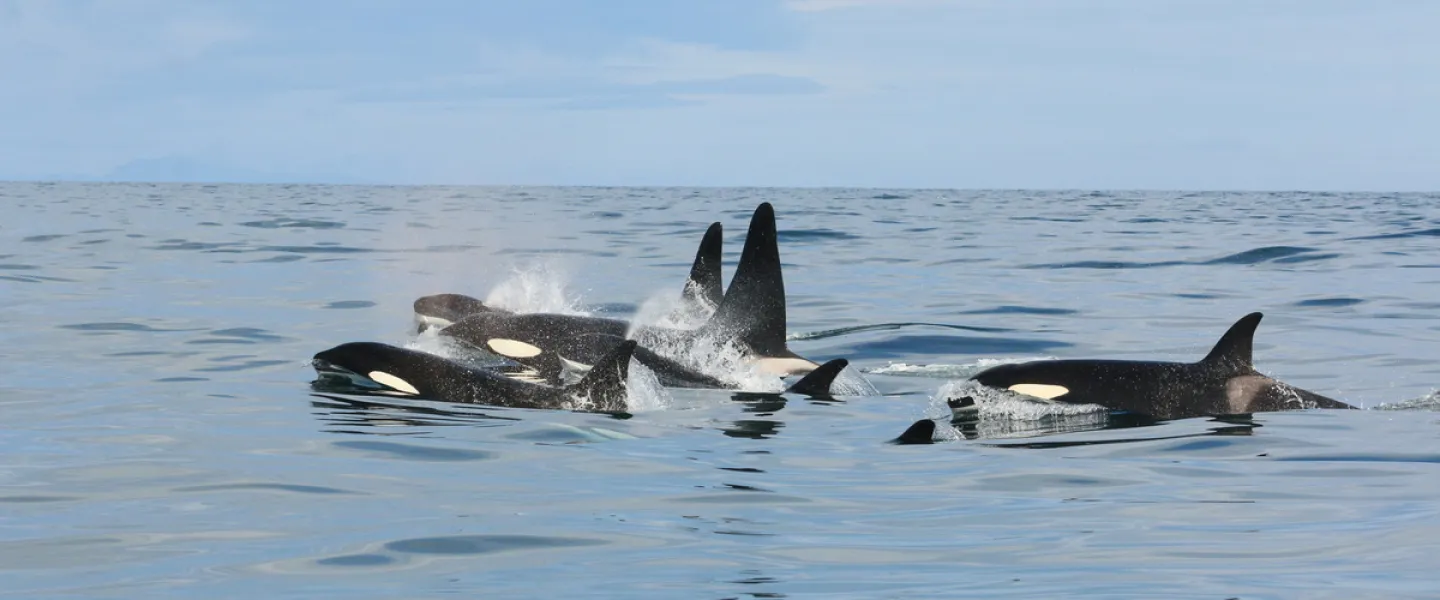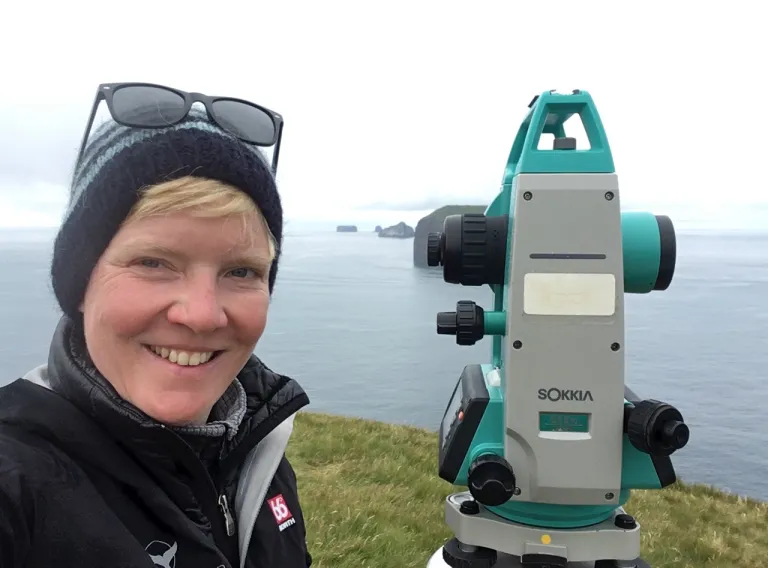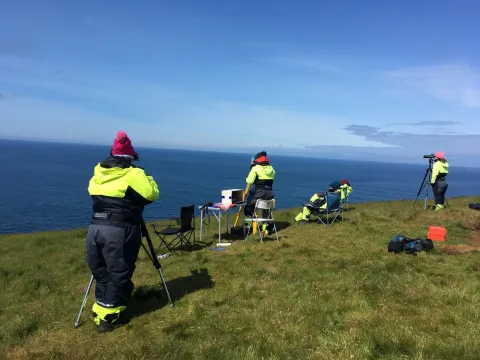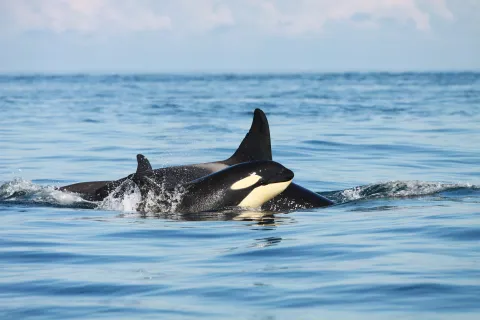
Killer whales have sometimes been called the wolves of the sea, since they hunt in organised pods and are top predators in their marine habitat. Their fearsome name suggests that there isn't much that could unsettle them. So why do they sometimes seem to flee from the mobbing and harassment of pilot whales here in Iceland, as scientists have observed? This is the question that Anna Selbmann is trying to answer with her doctoral research at the University of Iceland Faculty of Life and Environmental Sciences.
This is the first detailed study into interactions between pilot whales and killer whales in Icelandic waters, since pilot whales only recently became regular visitors to the Westman Islands, which is where Anna is conducting her research. "My PhD project tests the hypothesis that acoustic cues are particularly important in the interactions of long-finned pilot whales and killer whales," says Anna, who intends to explore whether the killer whales' calls change in proximity to pilot whales and whether there are geographical differences in killer whale call repertoire around Iceland.
Killer whales in Iceland use different calls to killer whales in Norway
Anna is not new to this kind of research, since for her Master's degree in biology at the University of Iceland she looked at killer whale calls around Iceland and compared them to the calls of killer whales in other parts of the North Atlantic. This research produced a detailed catalogue of killer whale call types in Iceland. "We found that killer whales in Iceland share some call types with killer whales in Shetland but not with killer whales from Norway," she says, adding that the project really got her interested in the communication system of killer whales. "The complexity of this communication system shows that acoustic communication is very important to these animals," says Anna who has also published a scientific article on the subejct with her collaborators.






